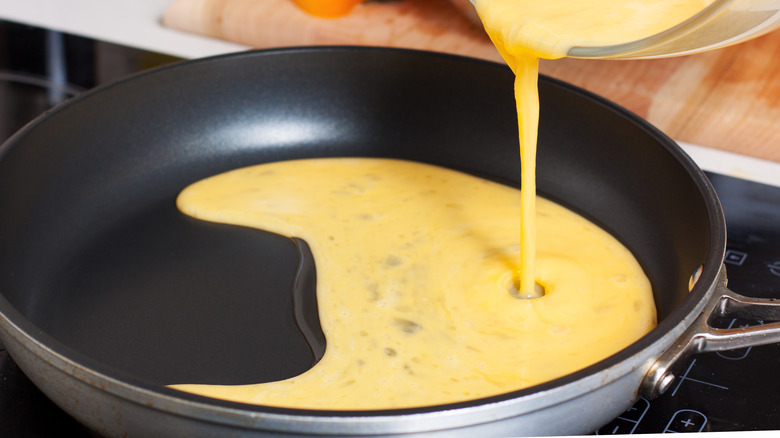How To Tell When It's Time To Fold Your Omelet
Every time you make an omelet, there's always that moment of truth that comes after the eggs are done cooking. Either you're successfully able to fold it into a proper omelet, or it falls apart, forcing you to settle for scrambled eggs instead. It's easy to assume that it all comes down to luck or flipping technique, but this common issue is actually caused by a combination of both the pan you use and the natural properties of eggs.
According to The Spruce Eats, eggs are prone to sticking to bottoms of pans because of the proteins they contain. When heated, these proteins form a chemical bond with the metal of the pan. This means that when that bond is too strong, the eggs will stick, and as a result, an omelet will be almost impossible to fold. The only way to prevent this from happening is to interrupt that bond, and to fold your omelet at the right point in the cooking process.
Don't leave your omelet unattended
Scrambled eggs and omelets both start the same way. You whisk eggs in a bowl until combined, then add them into a pan. When it comes to omelets, however, most people just pour the eggs in and leave them to cook. What you should be doing instead is lightly scrambling them first.
Per Eat This, Not That, start off with oil or butter in a pan, then add the beaten eggs, and use a spatula to gently stir them around. Demonstrating the technique on an episode of "The Kitchen," celebrity chef Geoffrey Zakarian also recommended adding an extra amount of diced butter as you stir. Fat creates a protective barrier against the surface of the pan, while constant movement prevents the protein in the egg from forming a chemical bond with the metal of the pan, The Spruce Eats explains.
If you continue to stir the eggs, you'll end up with scrambled eggs, so to turn them into an omelet, wait until the eggs are almost completely scrambled. Tilt the pan to distribute the remaining runny eggs, then you should be able to fold the omelet with ease.

